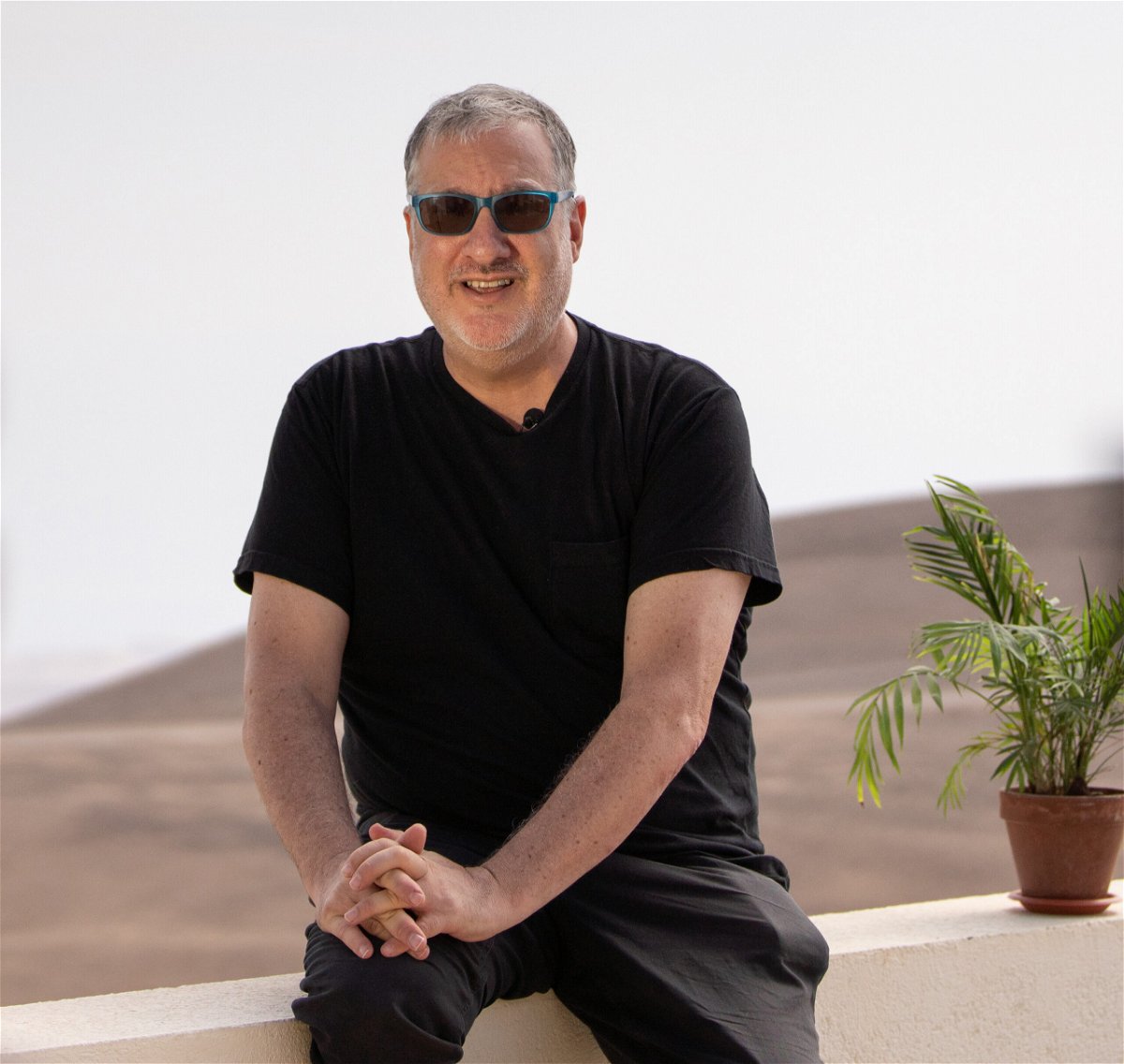Artist stages mass nude photos to highlight disappearing Dead Sea

Artist Spencer Tunick is known for staging mass nude photos around the world.
Elliott Gotkine, CNN
With desert peaks stabbing the sky and a thin blue ribbon of Dead Sea shimmering in the distance, the ghostly figures of around 200 men and women — painted head to toe in white — began appearing from behind an outcrop.
Each and every one of them was naked. Which could only mean one thing: World-renowned New York artist Spencer Tunick was back to photograph his latest installation.
“I’m here to raise awareness of the receding waters of the Dead Sea,” he said at a hotel terrace in the southern Israeli town of Arad, “and to bring attention to the ecological disaster that is happening.” Tunick noted that Mineral Beach, where he shot a series of images 10 years ago, has since been obliterated by sinkholes and a shrinking Dead Sea — a place he refers to as “the Eighth Wonder of the World.”
Known for coordinating large-scale nude photos in public places, from a Swiss glacier to the steps of the Sydney Opera House, Tunick is also here to help an old friend and collaborator, Ari Leon Fruchter, in his attempts to build a Dead Sea Museum. Indeed, the shoot is taking place on the very spot where the museum may one day stand.
And so, at around 2.45 p.m. on a Sunday afternoon, the participants — aged 19 to 70, and mostly Israeli, though some were from Switzerland, Britain and America, too — walked gingerly on the rocky moonscape into the formation prescribed by Tunick.
The white paint they wore — made especially for the artist — was designed to turn their bodies into conceptual pillars of salt, a reference both to mineral formations that appear in the Dead Sea and to the biblical figure of Lot’s wife, who, according to the book of Genesis, turned into a real pillar of salt as punishment for watching God’s destruction of Sodom.
Tunick hopes to connect this installation with the two he previously organized in the area, in 2011 and 2016, which saw participants standing in the Dead Sea’s waters or buried up to their waists in its mud.
“By connecting an environmental issue to the (human) body, (it) shows the vulnerability of the body up against nature — and also, in juxtaposition, the vulnerability of nature that’s caused by the body,” Tunick said. “Mankind can affect a massive sea. And I think that showing this juxtaposition of the body — very fragile — against the Dead Sea, which is equally fragile, will bring a new energy to the work and people’s conversations.”
To the untrained eye, the clouds, dusty haze and gusty winds did not bode well for the shoot. But Tunick begged to differ. “There’s nothing like misty mountains,” he said, referring to the backdrop. “The weather is perfect.”
Challenging shoots
In contrast to the chalky white participants, Tunick was dressed in black. He stood atop a camper van, hollering instructions to his “art warriors” through a megaphone. “Everyone in the front, walk towards me,” he said at one point. They dutifully obliged. “Slightly more. Muscular man,” he said, delicately, “move that way.”
One of those taking part was Gil Shavit. The 63-year-old engineer from Hararit, in northern Israel, said it was his second time at a Tunick shoot. Shavit felt “fantastic,” he said. Like everyone else, he wore nothing but white body paint.
Another man with a smile on his face was Arad’s mayor, Nisan Ben-Hamo. Despite some protests by ultra-Orthodox residents, he said Tunick’s presence was “a great gift” that put the town in the same league as Barcelona, Vienna, New York and other locations given the Tunick treatment. He hopes the artist’s visit will attract tourists, just as Israel reopens its borders following the pandemic. To that end, Israel’s Ministry of Tourism has contributed around one-third of the cost of Tunick’s trip, with the rest coming from private sponsors and supporters of the museum.
Tunick is also optimistic — not to say relieved — that as Covid-19 abates, life is returning to some form of normalcy. “I thought my work would be finished,” he said of the pandemic. “I thought I’d have to position stones in a giant field and start working on earthworks. I can keep it to ‘peopleworks’ now, so long as they’re vaccinated.”
That’s not to say a Tunick installation is a simple process. For a start, he can’t simply shoot wherever he wants. “The only place where I can make my work in the Middle East is Israel,” he said. “If I was asked to do a work in front of the Giza pyramids by the board of tourism of Cairo, I would say ‘yes’ in a heartbeat.”
Time constraints meant this latest installation was more limited than previous shoots. Tunick said numbers were also capped because he only had 200 cans of the special white paint.
For the men and women who made the cut, the elements, rocks and sheer physical toll of posing naked for long periods of time were not the only challenges. In a country as small as Israel, there are other, more prosaic hazards. Keren Bar Gil, Tunick’s art dealer in Israel, said that during one of the previous shoots a participant called out her name for assistance — only for her to realize it was her children’s (very naked) dentist.
This article was updated to remove mention of participants shivering from the cold.
The-CNN-Wire
™ & © 2021 Cable News Network, Inc., a WarnerMedia Company. All rights reserved.